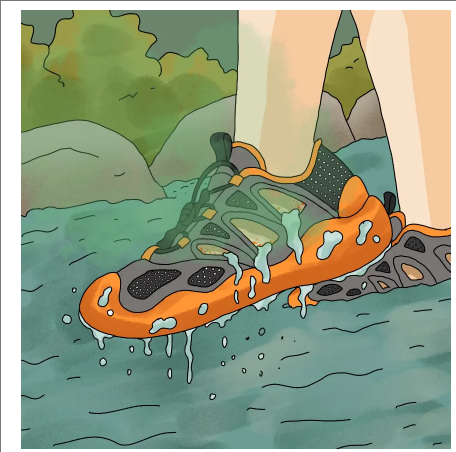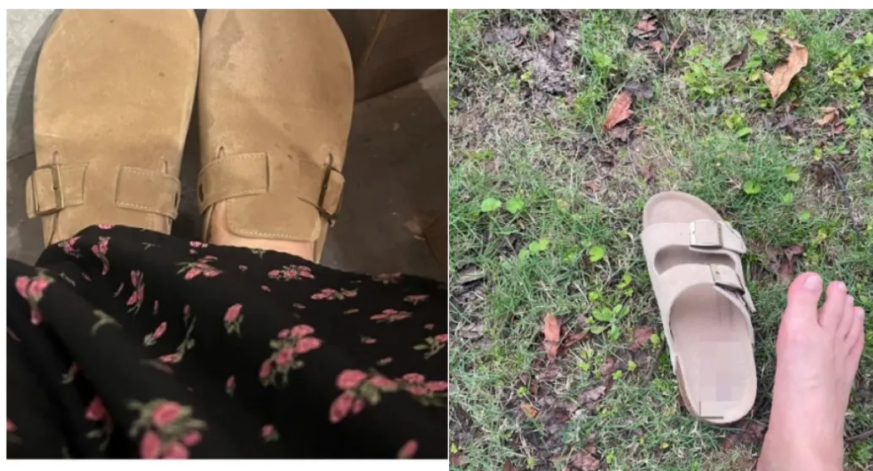If you clicked on this article, you've probably suffered from foot odor (your own or others'). Foot odor is mainly caused by bacteria, and poor hygiene can really pose serious health risks. But many people with foot odor are innocent - they shower daily, soak their feet in iodophor or alcohol, wear breathable socks, yet after half a day out, they still smell like sour rice or rotten eggs. Some people's foot odor comes and goes - sometimes they can walk 10,000 steps without issues, other times after just 1 hour outside, they're like a stink bomb. In these cases, feet aren't entirely to blame! Honestly, some shoes are hidden odor accelerators.

These 3 Types of Shoes Are More Prone to Smelling - Each in Its Own Way
This odor is actually amines and sulfur-containing substances metabolized by "anaerobic bacteria" in shoes after feeding. The less breathable the shoe and the more accumulated moisture, sweat, and sebum it traps, the more anaerobic bacteria multiply, resulting in stronger, longer-lasting odors. The following three types of shoes hit all the wrong notes. Check your collection - you might be wearing the first type right now.
01 PVC + Multiple Holes: Dirt Magnet

High-risk items: Croc-style shoes, shower slippers, sandals
PVC material slippers and sandals can cause embarrassing levels of odor. Plastic shoes are mainly made of two materials: EVA (ethylene-vinyl acetate copolymer) and PVC (polyvinyl chloride) - overall, PVC is more prone to developing odors. They look similar, but EVA has better ductility with bubble pores that don't easily break, while PVC has loose, easily damaged pores that absorb sweat and sebum - basically a "buffet for anaerobic bacteria."
Left: EVA closed-cell structure with isolated bubbles; Right: PVC open-cell structure. Additionally, PVC slippers are stiff, so manufacturers add plasticizers and foaming processes to create a "cloud-like" feel: foaming agents produce gas during manufacturing to form pores (like adding yeast to steamed buns), making shoes "softer." This improves comfort but also - makes them smell worse.
Beyond PVC material, designs with many holes and non-integrated construction are more prone to trapping dirt. Wear these in the shower or rainy weather, and after some time, they reach "biochemical weapon" levels of stench.
02 Water-Repellent Materials: Poor Breathability and Sweat Wicking

High-risk items: Water shoes, rain boots
Waterproof shoes are great - rain boots let you splash in puddles, water shoes keep you safe during stream trekking. But they have a hidden feature: they drain large amounts of water but trap small amounts.
Anyone who's worn rain boots knows they're sweaty and non-breathable - just thinking about them can make your nose wrinkle. But shouldn't trendy water shoes with "drainage and quick-drying" features prevent odor?
The problem lies in fabric and design: mesh uppers and midsole drainage holes combined with water-repellent fibers like polyester mean large water volumes drain out, but the fabric has poor moisture absorption. Small amounts of water, sweat, and skin flakes get trapped in crevices, especially in the sole.
During trekking, these might wash away in fast-moving water, but on the way home, shoes remain semi-moist while feet keep producing sweat and skin flakes, which accelerates bacterial growth. (Plus stream water isn't always clean.) Fail to wash them immediately or air-dry in sunlight, and they become 360° bacterial culture dishes.

Additionally, water shoes are becoming commuting shoes. But never wear them barefoot to work! Summer feet produce more sweat and sebum, creating a perfect anaerobic environment. Just check social media for countless victim accounts.
03 Artificial Leather: Like Wrapping Feet in Plastic
High-risk items: Dress shoes, Birkenstock-style sandals, Martin boots, driving shoes
Artificial leather isn't just in some dress shoes and Martin boots - smelly Birkenstock-style sandals often use this material too. Artificial leather combines base fabric with plastic to imitate genuine leather appearance at lower cost, but has one fatal flaw: terrible breathability and moisture-wicking - wearing it is like wrapping feet in plastic wrap, creating a hot, humid environment!
Some Birkenstock-style sandals have cork soles that develop cracks after getting wet, trapping dirt - sweaty feet will cry. If you love dress shoes, Martin boots, or Birkenstock-style sandals, check product details and avoid:
❌ Artificial leather, PVC leather, PU synthetic leather, recycled leather
✅ Genuine leather options like cowhide, split cowhide, suede cowhide (replace "cow" with pig, sheep, horse, etc.)

Focus on Choosing and Wearing Correctly - Wash When Wet, Never Air-Dry in Shade
Now that we've identified hidden odor accelerators, let's select, wear, and clean shoes properly:

01 Slippers
For Croc-style shoes and sandals, prioritize EVA material with minimal holes and integrated construction to leave bacteria nowhere to hide. For home use, consider cotton-linen uppers with EVA soles for moisture absorption, breathability, and comfort. Stand shower slippers upright after use, wash weekly, and replace when yellowing appears.
02 Water Shoes

While mostly water-repellent, look for:
✅ Antibacterial technology, EVA insoles/midsoles, and sole drainage systems
❌ Avoid uppers with PU leather or cotton which reduce breathability
03 Dress Shoes, Martin Boots, Birkenstock-style Sandals
Choose breathable "genuine leather" over artificial leather. Though genuine leather varies in quality, it always outperforms artificial leather in breathability. For cowhide options, look for "cow leather," "full-grain cowhide," or "split cowhide" - process terms like "suede" are also genuine leather.
Note: Genuine leather can't be washed or bleached - use dry cloth or specialized cleaner. A quick tip: genuine leather labels follow "X leather" or "X leather with Y finish" naming conventions.
Additional tips to prevent foot odor:
-
Rotate shoes every 3 days minimum and use disinfectant spray. Wash immediately after getting wet and never air-dry in shade.
-
For already smelly shoes: Try the popular iodophor disinfection + vitamin C decolorization method - scientifically sound and proven effective by many users.
-
Avoid barefoot wear with any material - trapped sweat becomes a bacterial feast. Opt for moisture-wicking, antibacterial socks to reduce odor.
-
Remember: feet are bacteria's main food source - regular washing and sock changes are crucial.
Take time to inspect your shoes and share this with family/roommates struggling with foot odor. Here's to fresh feet and odor-free homes, subways, and offices!














